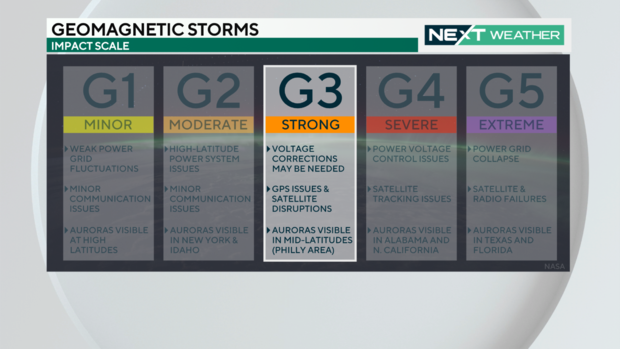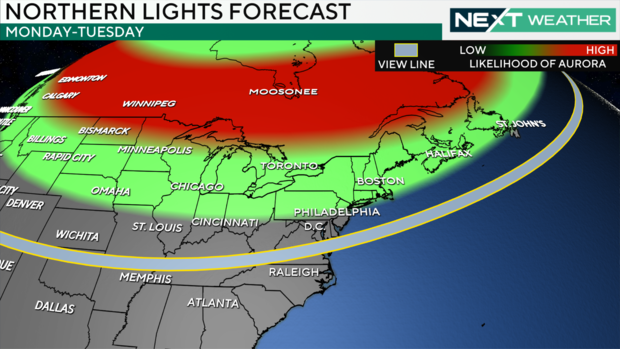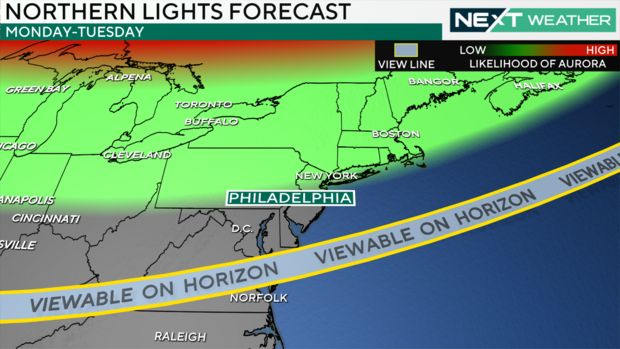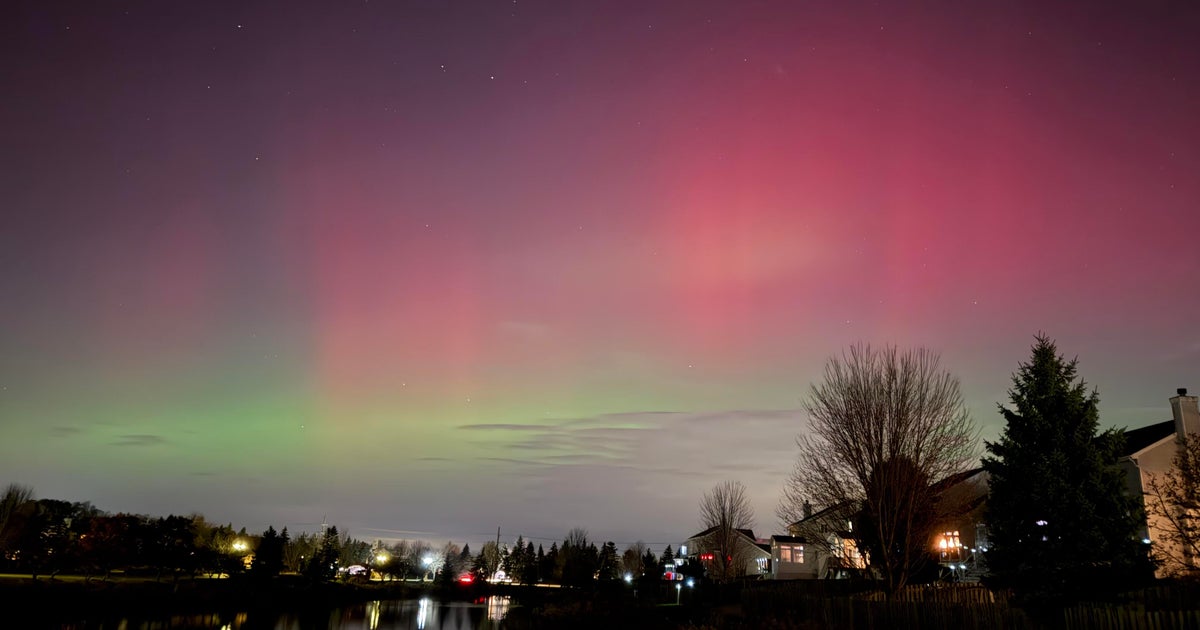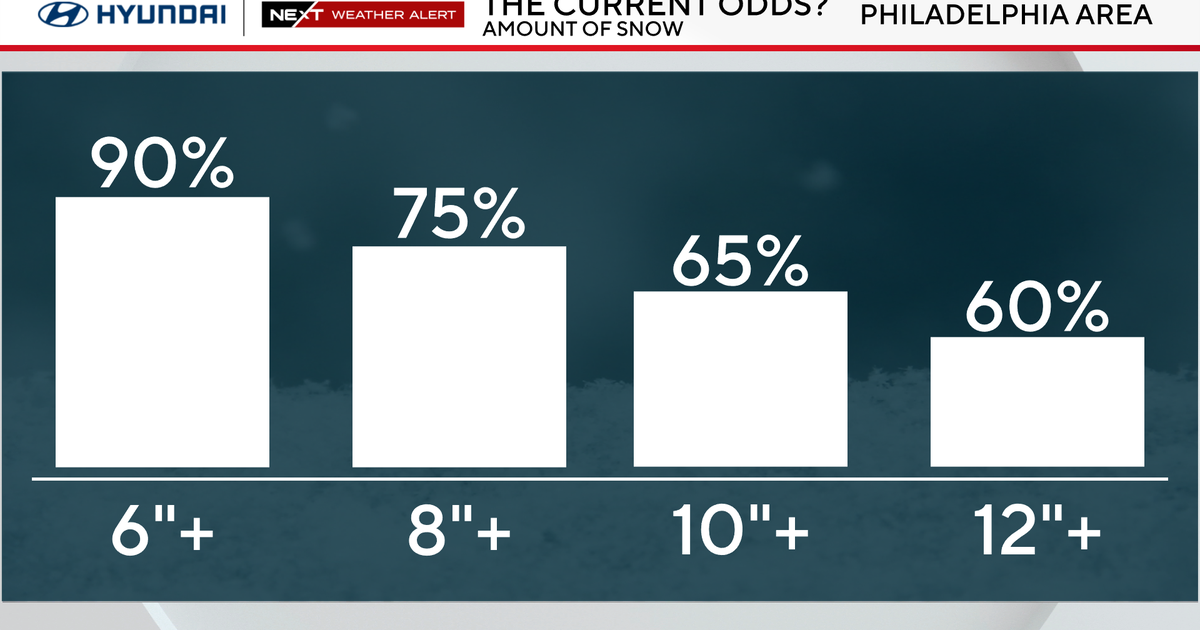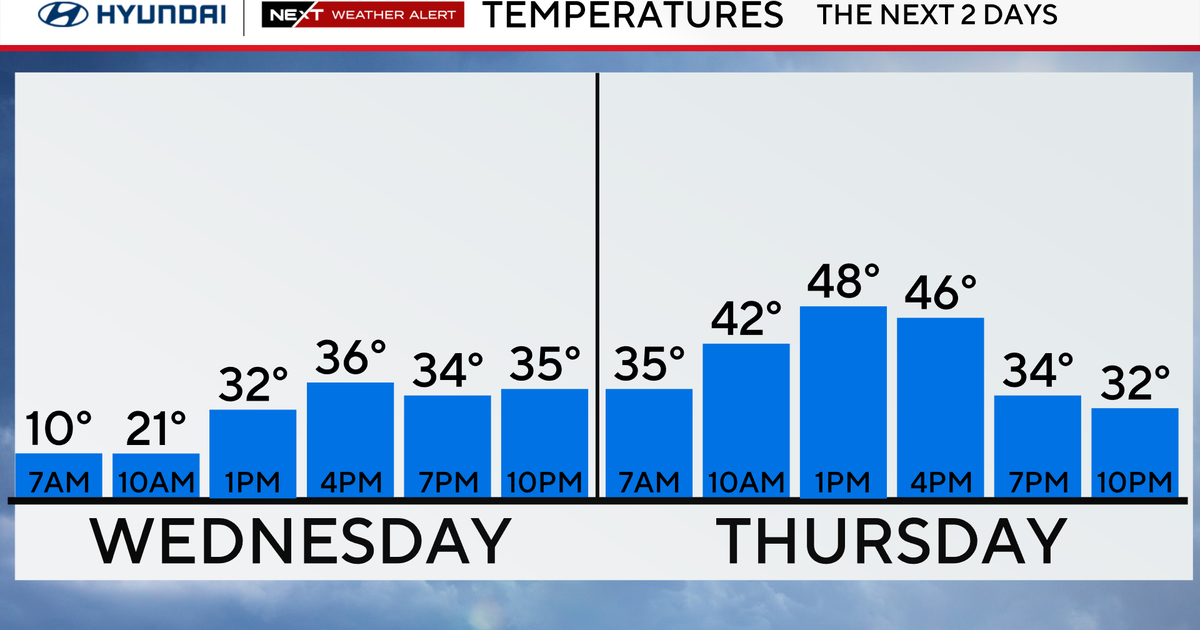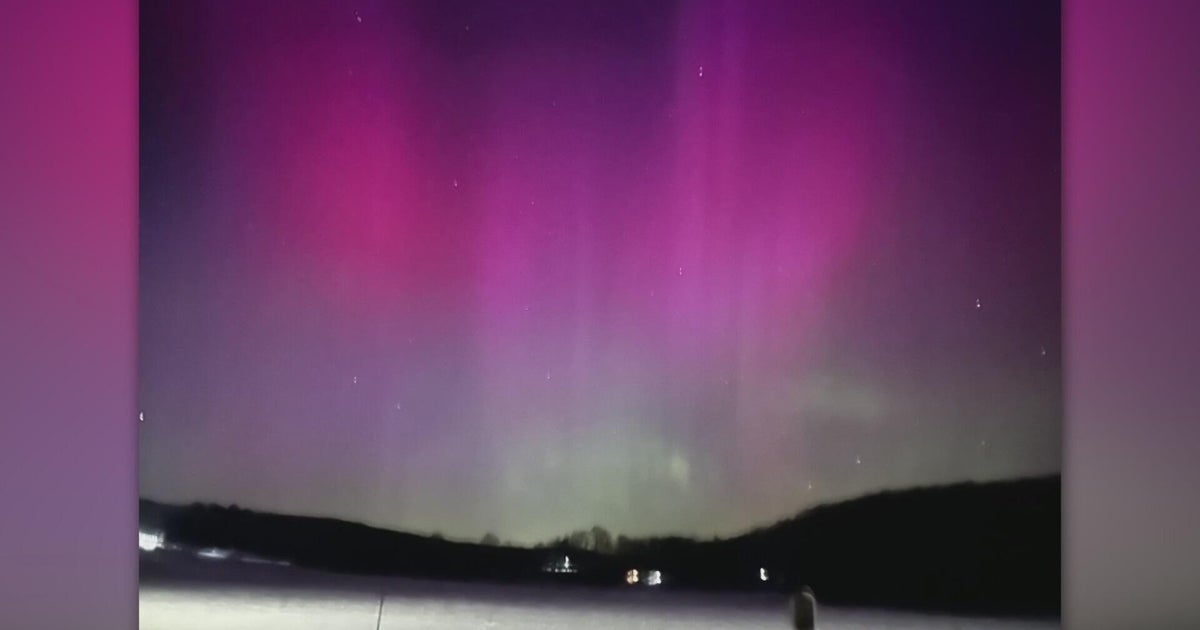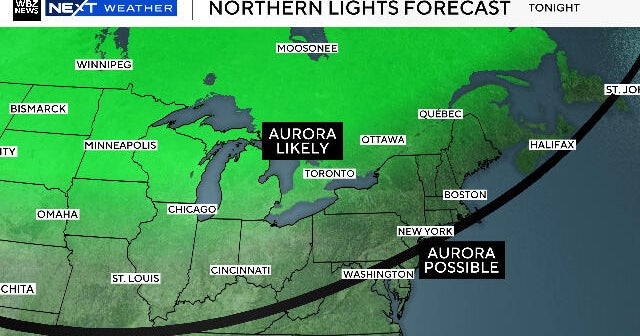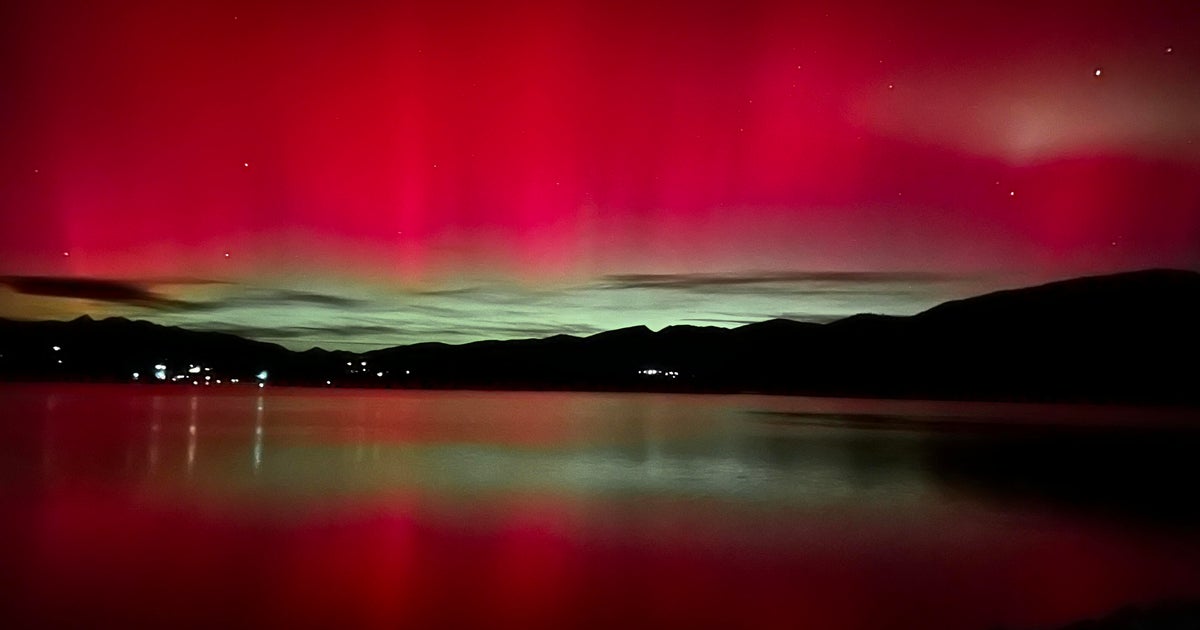Will the northern lights be visible in Pennsylvania? Here's what our meteorologists say
PHILADELPHIA (CBS) -- Could Philadelphia have another chance to see the northern lights this year? Our NEXT Weather meteorologists are breaking down why and how our area could have another chance to see the aurora borealis.
Sunday evening a strong solar flare was observed from a region of the sun currently facing toward Earth. A flare is an eruption of energy from the sun that can generally last minutes to hours. While solar flares are relatively common, the magnitude of the recent flare is not as frequent.
This strong flare was classified as an X-class flare at X 1.5. The strength of solar flares is broken down into classes with B-class being the smallest ones, followed by C, M and X-class being the largest.
The scale to classify solar flares is similar to the Richter scale - used to rate the magnitude of earthquakes, each letter in the solar flare scale represents a tenfold increase in energy output. So, an X-class flare is 10 times an M-class flare and 100 times a C-class. Within each letter class, there is a finer scale from 1 to 9.
From this solar flare, several coronal mass ejections were observed to be directed toward Earth.
CMEs are large expulsions of plasma and magnetic fields from the sun's corona. Due to the CMEs directed toward Earth, a geomagnetic storm watch has been issued by the Space Weather Prediction Center through July 31.
When these bursts of charged solar particles begin to hit the Earth's atmosphere and magnetic field, it can have an impact on the electrical grid, radio and satellite communications and the auroral borealis… AKA the northern lights.
When these charged particles travel through space and influence conditions on and around Earth, they are classified as geomagnetic storms.
Geomagnetic storms are classified on a scale from G1 through G5 based on the intensity and impacts predicted from the storm. The brunt of the CME is expected to arrive Tuesday morning which could result in G3 conditions, which could create some radio signal issues, and GPS tracking issues and cause the northern lights to potentially be visible as far south as Philadelphia.
A geomagnetic storm of this strength, however, would likely only be strong enough for the northern lights to be visible on the northern horizon in the Philadelphia area.
When is the best chance to see the northern lights?
Sunrise is at 5:58 tomorrow morning. Our best window of opportunity is after 8 a.m. when the sun is up, but there is a tiny chance for visibility away from city lights and on the northern horizon between 2-6 a.m.
The northern states in the Central, Mountain and Pacific time zones will have a better viewing time.
We may also have another chance for viewing between 8 p.m. and 11 p.m. Tuesday if skies clear, as another CME arrives.
Our NEXT Weather team is waiting to see if Sunday night's X-class solar flare and/or Monday's strong M-class flare will produce another opportunity later this week. The sunspot group producing these flares is very active so it is likely we will have more opportunities ahead.
Either way, our fingers are crossed that we'll have a chance to see the northern lights this time around!
